Call +(254) 703 030 000 / 751 483 999 / 721 704 777
- Home
- Electrical
- Wire Cable Management
- Cable Ties Mounts
- Standard Cable Ties
.....Read More
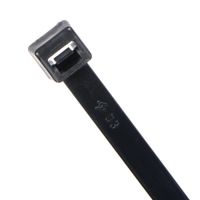
All Purpose Cable Ties

Bacteria-Resistant Cable Ties
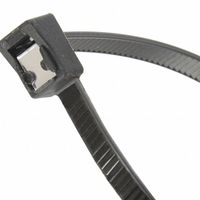
Cable Ties with Built-In Tail Clipper

Chemical- & Radiation-Resistant Cable Ties
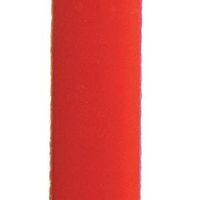
Colored and Striped Cable Ties
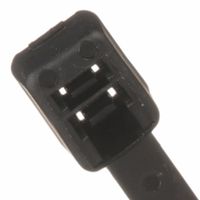
Double Loop Cable Ties
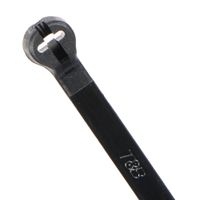
Heat-Stabilized Cable Ties

High-Temperature Cable Ties
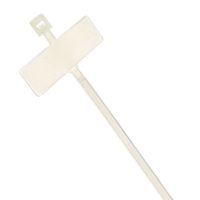
Identification Cable Ties
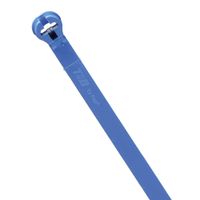
Metal-Detectable Cable Ties

Mountable Cable Ties
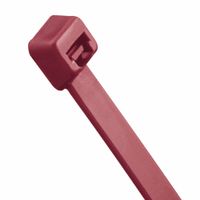
Plenum Cable Ties

Releasable Cable Ties
Frequently Asked Questions
What are standard cable ties used for?
Standard cable ties, also known as zip ties, are versatile fastening devices used for bundling and securing items together. They are commonly used in various applications due to their simplicity, strength, and ease of use. Here are some of their primary uses:
1. **Cable Management**: Cable ties are extensively used to organize and manage electrical cables and wires, preventing tangling and ensuring a neat and orderly appearance in both residential and commercial settings.
2. **Construction and Industrial Applications**: In construction, cable ties are used to secure materials, hold components in place, and bundle tools or equipment. They are also used in industrial settings for securing hoses, pipes, and other components.
3. **Automotive and Aerospace**: In the automotive industry, cable ties are used to secure wiring harnesses, hoses, and other components. Similarly, in aerospace, they help in organizing and securing cables and components within aircraft.
4. **Home and Garden**: Cable ties are useful for various household tasks, such as securing plants to stakes, organizing garden tools, or bundling items for storage.
5. **Event and Stage Management**: They are used to secure cables and equipment during events, ensuring safety and organization in temporary setups.
6. **DIY and Craft Projects**: Cable ties are popular in DIY projects for creating structures, securing materials, or as temporary fasteners.
7. **Security Seals**: They can be used as tamper-evident seals for securing bags, containers, or equipment, providing a simple security measure.
8. **Emergency Repairs**: Due to their strength and ease of use, cable ties can be used for temporary repairs in various situations, such as fixing broken straps or securing loose parts.
Overall, standard cable ties are an essential tool in numerous fields, valued for their reliability, versatility, and cost-effectiveness.
How do you use a cable tie?
To use a cable tie, first gather the items you want to secure. Hold the cable tie by the tail, which is the long, thin end. Insert the tail through the head, which is the square or rectangular end with a locking mechanism. Loop the tie around the items, ensuring they are neatly aligned and bundled together. Pull the tail through the head until the loop is snug around the items. Continue pulling to tighten the tie, ensuring it is secure but not overly tight to avoid damaging the items. Once the desired tightness is achieved, use scissors or a cable tie cutter to trim the excess tail, leaving a small length to prevent slippage. Ensure the cut end is smooth to avoid sharp edges. If you need to release the tie, use a small pointed object to press the locking tab inside the head while gently pulling the tail back through. For reusable ties, simply release the locking mechanism as per the manufacturer's instructions.
What are the different types of cable ties?
1. **Standard Cable Ties**: Made from nylon, these are the most common and are used for general-purpose bundling and organizing.
2. **Releasable Cable Ties**: Feature a mechanism that allows them to be reused, ideal for temporary applications.
3. **Heavy-Duty Cable Ties**: Designed for high-strength applications, these ties are thicker and stronger, suitable for industrial use.
4. **Colored Cable Ties**: Available in various colors for coding and identification purposes.
5. **Stainless Steel Cable Ties**: Used in harsh environments, these ties are resistant to extreme temperatures and corrosion.
6. **UV-Resistant Cable Ties**: Made from UV-stabilized materials, these ties are suitable for outdoor use where exposure to sunlight is a factor.
7. **Flame-Retardant Cable Ties**: Designed to resist fire, these are used in environments where fire safety is a concern.
8. **Mountable Head Cable Ties**: Feature a hole in the head for mounting to walls or panels.
9. **Double-Headed Cable Ties**: Allow for two separate bundles to be secured with one tie.
10. **Marker Cable Ties**: Include a tag or label area for easy identification of bundled cables.
11. **Beaded Cable Ties**: Feature a series of beads that allow for adjustable tension and easy release.
12. **Velcro Cable Ties**: Made from hook and loop material, these are reusable and gentle on cables.
13. **Plenum-Rated Cable Ties**: Suitable for use in air-handling spaces, meeting specific fire safety standards.
14. **Heat-Stabilized Cable Ties**: Designed to withstand higher temperatures without degrading.
15. **Low-Profile Cable Ties**: Have a flat head to minimize snagging and provide a cleaner appearance.
16. **Metal Detectable Cable Ties**: Contain metal particles for detection by metal detectors, used in food and pharmaceutical industries.
Can cable ties be reused?
Cable ties, commonly known as zip ties, are typically designed for single use. They are made from nylon and feature a ratchet mechanism that locks the tie in place, making them secure and tamper-resistant. Once tightened, the locking mechanism prevents the tie from being loosened or removed without cutting it, which generally makes them non-reusable.
However, there are reusable cable ties available on the market. These are designed with a release mechanism that allows them to be easily undone and reused multiple times. Reusable cable ties are often made from more durable materials and have a small lever or button that releases the locking mechanism, allowing the tie to be opened without cutting.
For standard, non-reusable cable ties, some people attempt to reuse them by carefully inserting a thin object, like a pin or a small screwdriver, into the ratchet mechanism to release the lock. This method can be tricky and may weaken the tie, making it less reliable for future use.
In summary, while traditional cable ties are not intended for reuse, reusable versions are available and designed for multiple applications. If reusability is a priority, it is advisable to purchase these specifically designed reusable cable ties.
How strong are cable ties?
Cable ties, also known as zip ties, are versatile fasteners used for bundling and securing items. Their strength varies based on material, size, and design. Typically made from nylon, cable ties can also be found in stainless steel for more demanding applications.
The tensile strength of cable ties is a key indicator of their strength. Standard nylon cable ties range from 18 to 250 pounds of tensile strength. For example, a small 4-inch tie might have a tensile strength of 18 pounds, while a larger 14-inch tie could support up to 120 pounds. Heavy-duty ties, often used in industrial settings, can exceed 250 pounds.
Material plays a crucial role in strength. Nylon 6/6 is common for general use, offering good resistance to temperature and UV light. For extreme conditions, UV-stabilized or heat-stabilized nylon is used. Stainless steel ties, though more expensive, provide superior strength and resistance to chemicals, extreme temperatures, and UV exposure, making them suitable for harsh environments.
The design also affects strength. Standard cable ties have a ratchet mechanism that locks the tie in place, while releasable ties allow for reuse. Some ties have metal pawls for added strength, and others are designed for specific applications, such as those with a double-loop for extra security.
In summary, the strength of cable ties depends on their material, size, and design. They can range from light-duty options for simple tasks to heavy-duty versions for industrial applications. Always choose a cable tie that matches the specific requirements of your task to ensure safety and effectiveness.
What sizes do cable ties come in?
Cable ties come in a variety of sizes to accommodate different applications and needs. The sizes are generally categorized by length, width, and tensile strength.
1. **Length**: Cable ties can range from as short as 4 inches (about 10 cm) to as long as 60 inches (about 152 cm) or more. Common lengths include 4, 6, 8, 11, 14, 18, 24, 36, and 48 inches.
2. **Width**: The width of cable ties typically ranges from 0.1 inches (2.5 mm) to 0.5 inches (12.7 mm). Narrower ties are used for lighter applications, while wider ties are used for heavier-duty tasks.
3. **Tensile Strength**: This refers to the amount of force a cable tie can withstand before breaking. Light-duty ties might have a tensile strength of around 18 lbs (8 kg), while heavy-duty ties can exceed 250 lbs (113 kg).
4. **Specialty Sizes**: There are also specialty cable ties designed for specific purposes, such as extra-long ties for bundling large cables or extra-wide ties for added strength.
5. **Miniature Ties**: These are typically less than 4 inches in length and are used for small, delicate tasks.
6. **Standard Ties**: These are the most common and are used for general-purpose applications.
7. **Heavy-Duty Ties**: These are designed for industrial applications and can handle larger loads.
8. **Extra-Heavy-Duty Ties**: These are used in very demanding environments and can handle the heaviest loads.
9. **Releasable Ties**: Available in various sizes, these can be reused and are ideal for temporary applications.
10. **Mountable Ties**: These have a hole for mounting and come in various sizes for securing cables to surfaces.
Cable ties are versatile and come in numerous sizes to suit a wide range of applications, from organizing small cables to securing large bundles in industrial settings.
Are cable ties weather-resistant?
Yes, cable ties can be weather-resistant, but it depends on the material they are made from. Standard nylon cable ties are not inherently weather-resistant as they can degrade when exposed to UV rays, moisture, and temperature fluctuations. However, there are specific types of cable ties designed to withstand harsh environmental conditions.
UV-resistant cable ties are made from UV-stabilized nylon, which includes additives that protect against degradation from sunlight exposure. These are suitable for outdoor use where they will be exposed to direct sunlight.
For extreme weather conditions, such as high humidity, saltwater, or chemical exposure, stainless steel cable ties are an excellent choice. They offer superior resistance to corrosion and can withstand a wide range of temperatures, making them ideal for marine and industrial applications.
There are also weather-resistant cable ties made from materials like polypropylene or fluoropolymer, which provide enhanced resistance to chemicals, moisture, and UV radiation. These are often used in environments where chemical exposure is a concern.
When selecting weather-resistant cable ties, it's important to consider the specific environmental conditions they will face, such as temperature range, UV exposure, and potential chemical contact. This ensures the ties maintain their strength and functionality over time.
In summary, while not all cable ties are weather-resistant, there are specialized options available that are designed to endure various environmental challenges. Choosing the right type based on the application and environmental conditions is crucial for ensuring long-term performance.